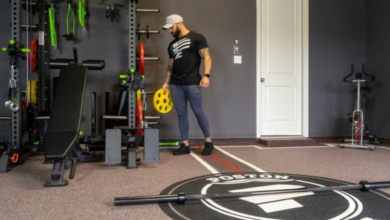The Growing Demand for Bulk Sports Balls in Manufacturing

Introduction
The manufacturing industry has been evolving rapidly to meet the growing demand for quality sports equipment. Among the most widely purchased items, bulk sports balls stand out as a top choice for schools, gyms, retailers, and sports clubs. Purchasing them in larger quantities not only reduces costs but also ensures a consistent supply for training sessions, tournaments, and commercial sales. Manufacturers in this sector are focusing on innovation, quality control, and sustainability to keep pace with the needs of athletes and organizations worldwide.
Why Organizations Prefer Buying in Bulk
For schools, universities, and training academies, sports equipment is an ongoing requirement. Buying bulk sports balls makes it easier to manage costs while ensuring that every team or group of players has access to reliable equipment. Sports clubs benefit from these bulk purchases by maintaining uniformity in their training gear, which plays a significant role in skill development. Retailers, on the other hand, invest in bulk orders to maximize profit margins and ensure product availability during peak sports seasons.
The Manufacturing Process Behind Sports Balls
The journey of sports balls from raw materials to final products involves precision engineering and rigorous testing. Most balls are made from materials such as synthetic leather, natural rubber, or polyurethane, which are selected for durability and performance. Advanced machinery is used for stitching, molding, and inflating the balls to achieve consistent shape and bounce. Quality control is a crucial step where every batch of bulk sports balls is tested for performance, ensuring that they meet international sports standards before reaching the market.
See also: The Role of Protein Shakes in Modern Nutrition
Cost Benefits of Purchasing in Large Quantities
One of the strongest reasons organizations turn to bulk orders is cost-effectiveness. Manufacturers often offer discounts on large-scale purchases, which significantly reduces the per-unit price. This financial advantage allows schools to stay within their budgets, gyms to provide more equipment for training, and sports retailers to gain better profit margins. Beyond direct savings, bulk buying also cuts down on repeated shipping expenses, creating additional long-term benefits.
See also: The Role of Protein Shakes in Modern Nutrition
The Role of Customization in Bulk Orders
Today’s manufacturing industry offers more than just standardized products. Organizations purchasing bulk sports balls often request customization, such as logos, team colors, or branding elements. This adds value not only to the athletes bulk sports balls who use the equipment but also to the brand identity of the organization. Manufacturers accommodate these requirements by using printing and design technologies that ensure long-lasting results without compromising the performance of the balls.
Impact of Bulk Supply on Sports Training
Consistent access to quality training equipment is vital for athletes. When schools and academies purchase bulk sports balls, they create an environment where players can train without limitations. A sufficient supply of equipment reduces downtime during practice sessions and allows for skill-specific drills. For professional clubs, having uniform training gear across all levels contributes to discipline and helps players adapt to standardized conditions.
Sustainability in Sports Ball Manufacturing
As the world moves toward eco-friendly production practices, manufacturers are also taking steps to make sports equipment more sustainable. Many producers are shifting toward recyclable materials and energy-efficient production processes. Offering bulk sports balls produced under sustainable practices not only meets environmental standards but also appeals to organizations and consumers who value green initiatives. This trend is reshaping the manufacturing industry by making eco-conscious production a competitive advantage.
Challenges Faced by Manufacturers
While bulk orders are profitable, they also bring challenges for manufacturers. Meeting deadlines, ensuring consistent quality across large quantities, and managing raw material costs are ongoing concerns. Additionally, fluctuating global demand for sports equipment means that manufacturers must be flexible and adaptable. The need for balance between affordability and high performance requires continuous research and development.
Technological Advancements in Production
Modern manufacturing has been revolutionized by technology, and the sports ball sector is no exception. Automated stitching machines, AI-driven quality inspections, and advanced material testing are becoming common. These innovations not only speed up production but also improve accuracy in creating bulk sports balls. By integrating technology, manufacturers are able to reduce errors and maintain consistency across large orders.
Future Outlook of Bulk Sports Ball Market
The demand for sports equipment is expected to rise as global participation in sports continues to grow. Schools are placing greater emphasis on physical education, while fitness centers and sports clubs expand their training programs. Retail markets are also benefiting from an increase in sports enthusiasm, particularly in emerging economies. With this upward trend, the market for bulk sports balls will continue to expand, and manufacturers who focus on quality, customization, and sustainability will remain at the forefront.
Conclusion
The manufacturing industry plays a vital role in supplying organizations with affordable, durable, and customizable equipment. The rising demand for bulk sports balls is not just a reflection of cost-saving strategies but also of the growing importance of accessible sports equipment in education, fitness, and recreation. By adopting technological advancements and sustainable practices, manufacturers are ensuring that they meet the expectations of both professional and amateur athletes worldwide. The future of this sector remains promising as more organizations recognize the long-term value of bulk purchasing in sports.





